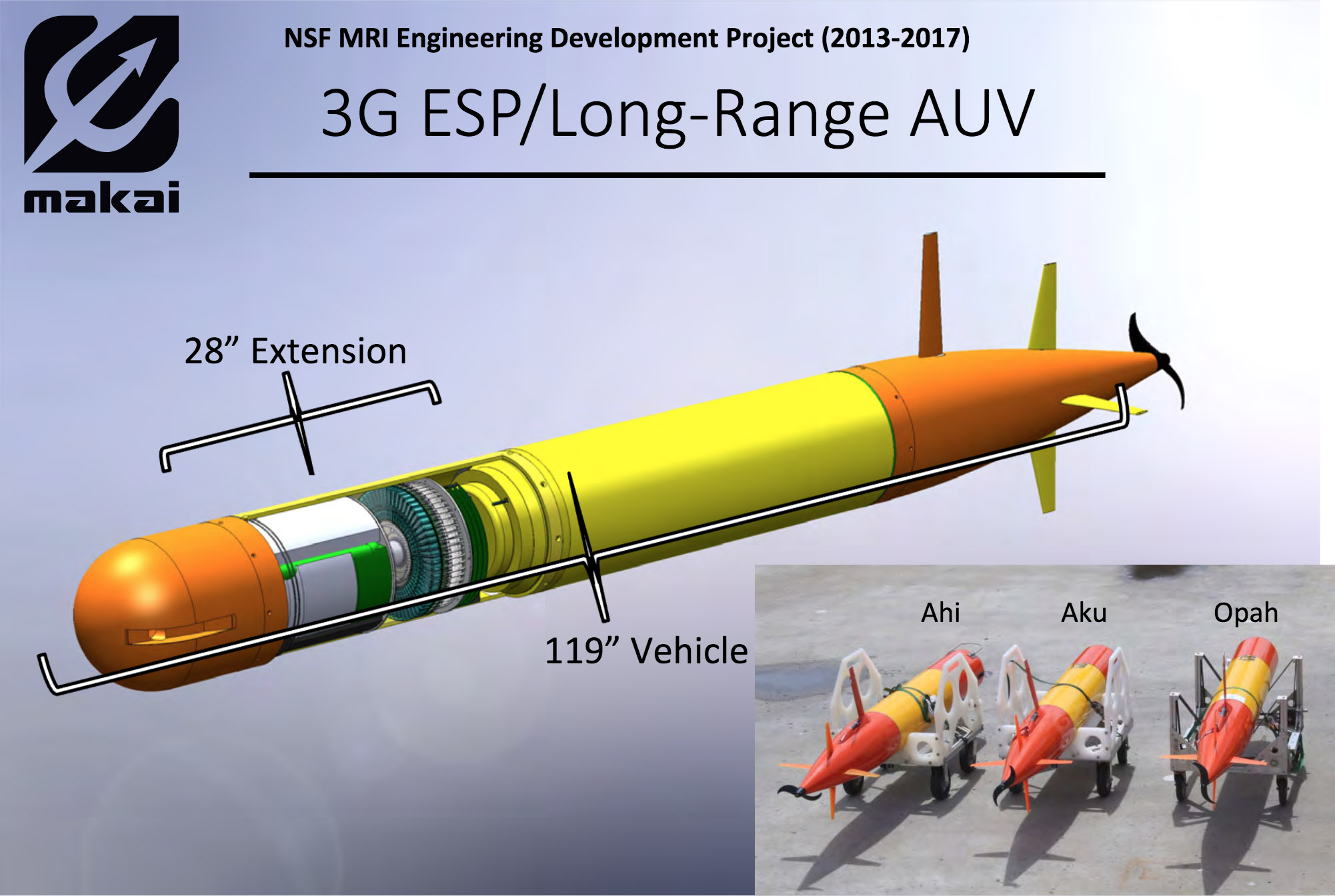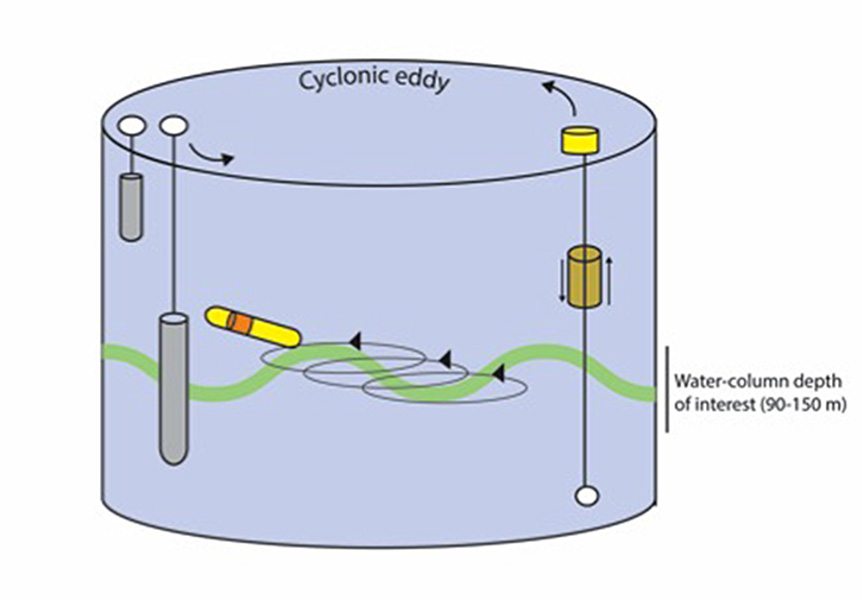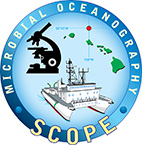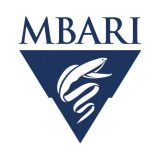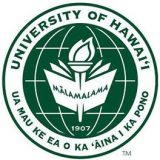If you have ever flown over the Pacific and looked down from the window seat, the water seems still. Viewed from this distance, the water appears stagnant with unmoving dashes of waves. This picture strikes discordantly with the imagination – it fails to capture the flux of ocean dynamics, giving little evidence to the diverse and numerous systems moving perpetually below the ocean’s surface. No matter one’s proximity, there’s only so much that can be discerned with human eyes. Cue the robots! This February, Principal Investigators and co-directors for the Simons Collaboration on Ocean Processes and Ecology (SCOPE) Drs. David Karl and Edward DeLong, their SCOPE team from the University of Hawai’i, and engineers from the Monterey Bay Aquarium Research Institute (MBARI) will be working together to test new ways of adaptively sampling oceanographic features with an exciting suite of autonomous underwater vehicles.
This expedition will use a suite of oceanographic instruments to survey and track systems of currents – called “mesoscale eddies” – that exist within the North Pacific Subtropical Gyre (NPSG). Eddies are water systems that move in opposition to the main current of the greater ecosystem, creating a circular, swirling dynamic like a whirlpool. A mesoscale eddy is a medium-sized system defined by the team as a “closed circulation field with a diameter of 100-200 km.” One important result of this dynamic is the vertical mixing of oceanic layers within defined water columns. Because each of a given water column’s layers (i.e. Epipelagic, Mesopelagic, Bathypelagic, Abyssopelagic, in descending order) comprises different physical characteristics, patterned movements of water masses between these otherwise separate habitats have important consequences for the productivity and biological structure of the ecosystem.
A Suite of Eddy-focused Robots
These eddy systems create vortices and change properties of the ocean environment inside as they move westward, impacting the productivity and cycling of the NPSG, an important open ocean ecosystem. The SCOPE team will deploy three seawater-sampling Long-Range Autonomous Underwater Vehicles (LRAUVs) from Falkor that will operate in tandem with a Wave Walker, a SeaGlider, a Wire Walkers, and other robotic platforms. The LRAUVs will first characterize the eddy system, then perform high resolution mapping of depths where just enough light penetrates for photosynthesis. The mapping phase will include the collection of chemical and biological samples from these low-light adapted microbial communities, providing a unique insight into the influence of eddies on ocean ecosystems. This information will be used to improve current ocean models, which are critical for developing expectations on the health of future oceans.
Why Eddies?
Within eddy systems, water masses can interchange within a vertical range of up to 100 meters, moving seawater from upper to lower layers in the column, and vice versa. This is important because each layer has different physical, chemical, and biological characteristics, and their mixing can produce sudden and long-term changes in the structure of an ecosystem. For instance, there is a significant increase in levels of nutrients at 150 meters below sea level, but light decreases exponentially with depth. Therefore, the vertical interchange of water masses could have a profound impact on organisms that are reliant on photosynthesis and the products of this process for survival. Eddies are important features in these systems because a cyclonic (counter clockwise rotating) eddy can bring the deep nutrient layer to shallower depth, exposing the low-light community to both light and nutrients.
Scientists have long observed the influence of mesoscale eddies upon the community structures and productivity of oceanic ecosystems. The fact that they have such an impact is not a recent revelation. However, little has been established with regard to these systems within the NPSG. While there is infrastructure in place to measure their influence in the region over long periods of time (months, years), there is currently no capacity to measure short-term patterns of change over periods of hours, days, or even weeks. That is about to change. The fleet of LRAUVs developed at MBARI will allow the SCOPE team to record data and collect sample at the same time in greater detail than ever before. Finally, we will be able to detect short term patterns of change influenced by mesoscale eddies.
This expedition has important implications, not only for learning more about the influence of eddy systems upon the world’s largest ecosystem – the NPSG – but for the way scientists conduct research in the open ocean. One of the biggest challenges this team faces will be to learn how to best optimize the tools of the robotics suite. In addition to characterizing eddy system patterns, another intended outcome is the development of a single platform that brings together all the data collected by AUVs in the water and various shipboard instruments. Their hope is that this platform, referred to as “Data Situational Awareness,” will ultimately make all in situ research projects such as theirs much more efficient, and establish an infrastructure that will finally make it possible to characterize detailed features of mesoscale eddies and their influence upon ecosystem dynamics.
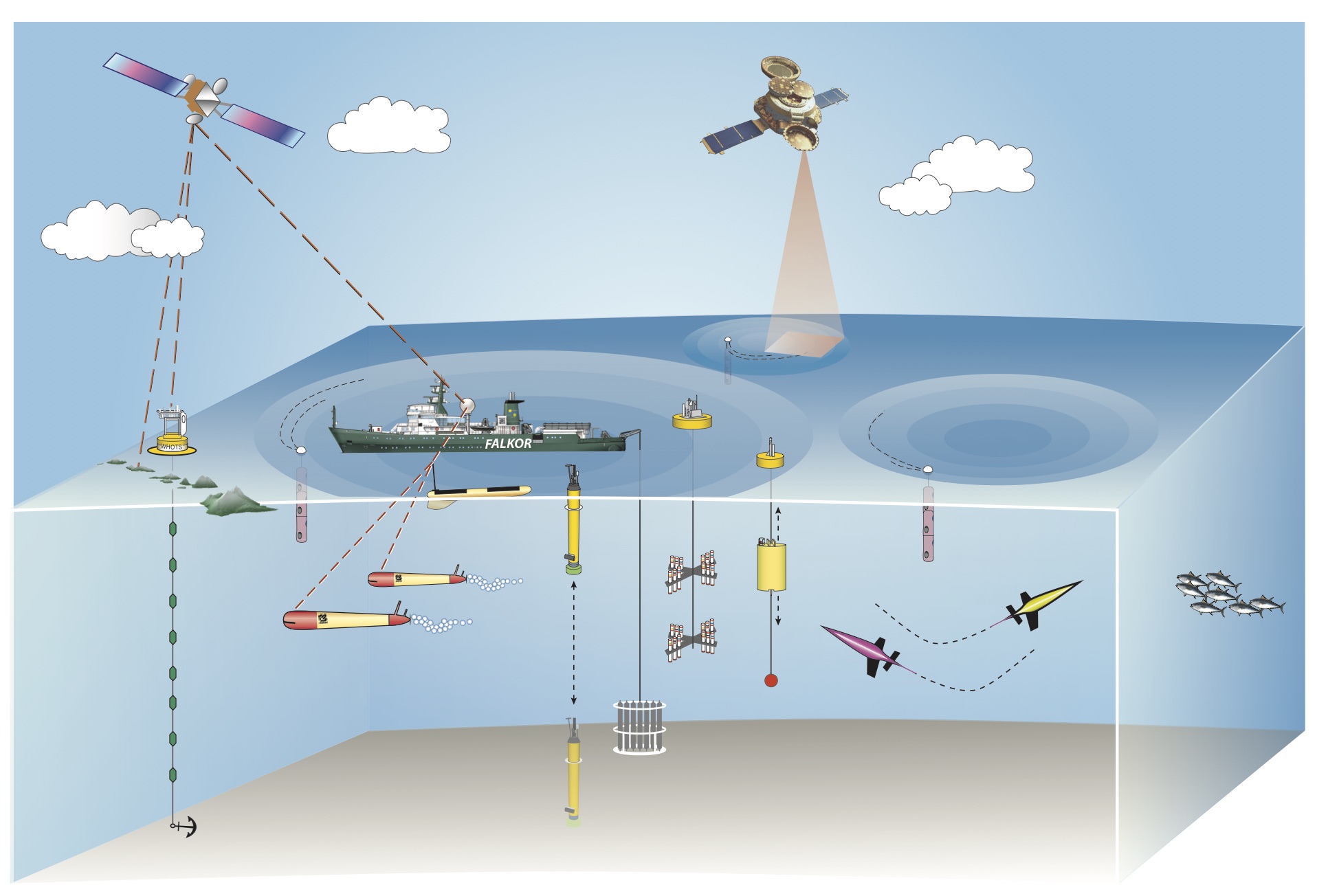
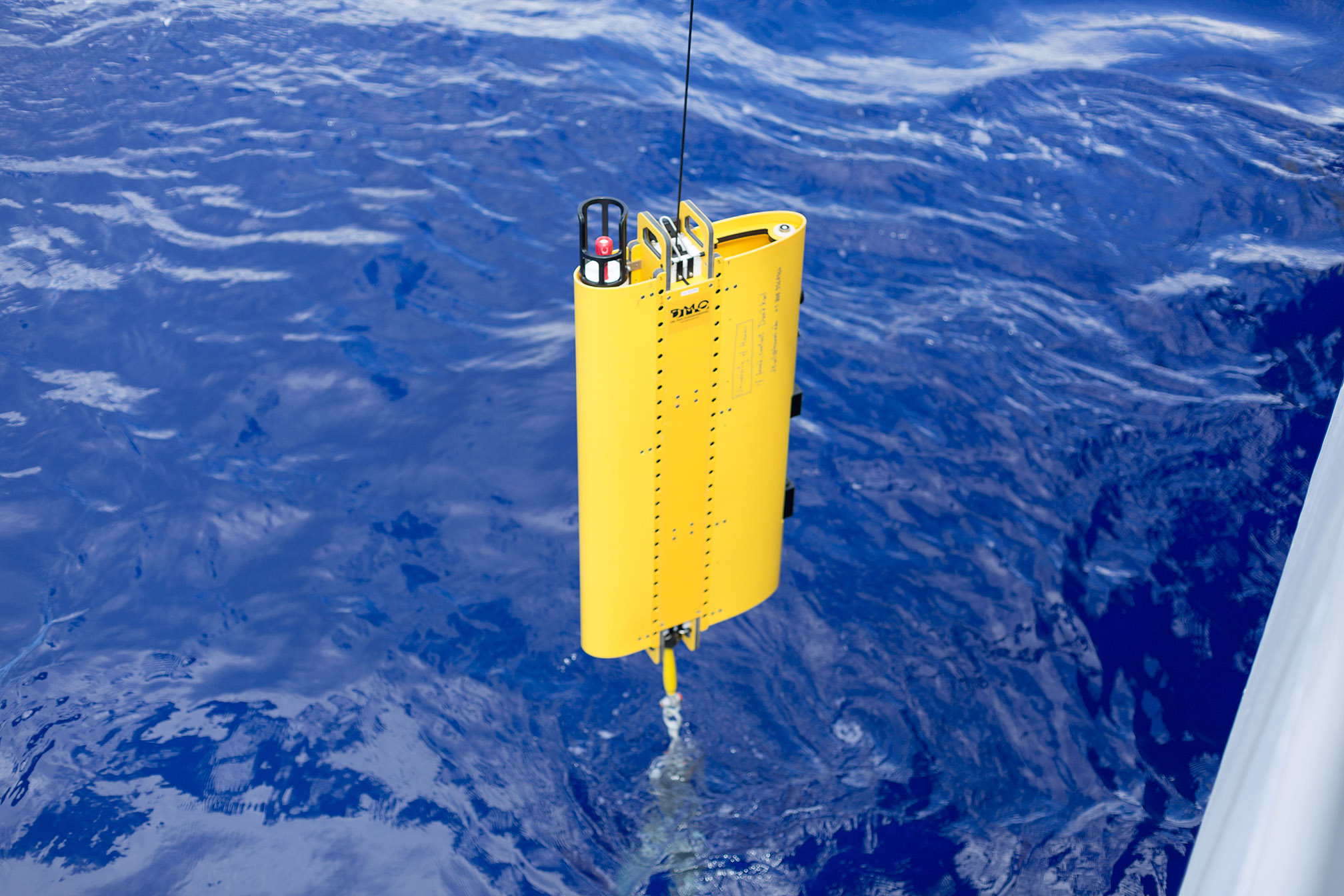
Data & Publications
The Simons Collaboration on Ocean Processes and Ecology (SCOPE) has created a Falkor 2018 Cruise Page that also contains CTD, Surface PAR, and Imaging FlowCytobot data and description of the project.
Images of plankton collected from the Flow Cytobot during Leg 1, can be viewed here. (Data credit: Angelicque White, SCOPE)
Data on the University of Hawaii’s Seagliders that were deployed from Falkor has been archived:
The resulting shipboard dataset is being archived at Rolling Deck to Repository and is now available.
ADCP data is curated and archived by University of Hawaii.
- 30 Day Preliminary Cruise Report: Eddy Exploration and Ecosystem Dynamics
- Informal Cruise Report: Eddy Exploration and Ecosystem Dynamics
- Zhang, Y., Ryan, J., Kieft, B., Hobson, B., McEwen, R., Godin, M., Harvey, J., Barone, B., Bellingham, J., Birch, J., Scholin, C., and Chavez, F. (2019). Targeted Sampling by Autonomous Underwater Vehicles. Front. Mar. Sci. 6:415, doi: 10.3389/fmars.2019.00415.
- Zhang, Y., Kieft, B., Hobson, B., Ryan, J., Barone, B., Preston, C., et. al. (2020). Autonomous Tracking and Sampling of the Deep Chlorophyll Maximum Layer in an Open-ocean Eddy by a Long Range Autonomous Underwater Vehicle. IEEE Journal of Oceanic Engineering, 45(4), doi: 10.1109/JOE.2019.2920217. [This article is published as OPEN ACCESS].
- Wear, E., Carlson, C., and Church, M. (2020). Bacterioplankton metabolism of phytoplankton lysates across a cyclone-anticyclone eddy dipole impacts the cycling of semi-labile organic matter in the photic zone. Limnol. and Ocean, 65 (7), doi: 10.1002/lno.11409. [This article has been published as OPEN ACCESS].
- Zhang, Y., Ryan, J., Hobson, B., Kieft, B., Romano, A., Barone, B., et. al. (2021). A system of coordinated autonomous robots for Lagrangian studies of microbes in the oceanic deep chlorophyll maximum. Science Robotics, 6(50), doi: 10.1126/scirobotics.abb9138.
In the News
New vehicles to study microbial life in Hawaiian waters
Behind The Scenes MBARI • December 7th, 2017
Self-driving robots collect water samples to create snapshots of ocean microbes
University of Hawai’i News • March 7th, 2018
Self-driving robots collect water samples to create snapshots of ocean microbes
MBARI News • March 7th, 2018
Self-driving robots collect water samples to create snapshots of ocean microbes
Science Daily • March 8th, 2018
New Underwater Vehicles to Study Ocean’s Smallest Organisms
Hawaii Public Radio • March 9th, 2018
Self-Driving Robots Collect Water Samples to Create Snapshots of Ocean Microbes
Big Island Now • March 9th, 2018
New Autonomous Submersibles Can Take Water Samples Anyplace, Anytime
Engineering.com • March 14th, 2018
LRAUVs are amphibious drones for research purposes
Pestaola • March 16th, 2018
Self-Driving Robots Creating Snapshots of Ocean Microbes
Ocean News & Technology • March 19th, 2018
The Robot That Is Helping Unravel the Mystery of Ocean Microbes
Oceans Deeply • March 21th, 2018
These Underwater Robots Offer a New Way to Sample Microbes From the Ocean
Smithsonian Magazine • March 28th, 2018
Scientists Return Setting a New Record with Self-Driving Robots and a Clearer Picture of Ocean Communities
Benzinga • April 9th, 2018
Scientists Set Record with Self-Driving Robots
Marine Technology News • April 10th, 2018
Autonomous Robots Set Sail to Explore the Ocean
Machine Design • April 11th, 2018
Collaborations bring distant study sites into reach
MBARI 2017 Annual Report • April 18th, 2018
Monitoring and Tracking Ocean Microbes with LRAUVs
Environmental Monitor • June 18th, 2018
Underwater robots track and sample microbial communities in a North Pacific eddy
MBARI • July 30th, 2019
